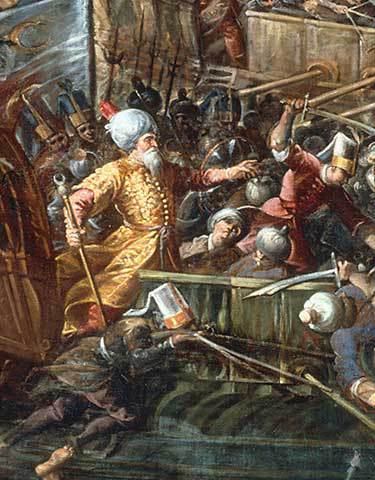The medieval and early modern Western image of the Ottoman soldier as motivated principally by fanatic Muslim (ghazi) belief, and the Ottoman Empire as driven by a core mission of ‘‘holy war’’ (jihad), is a gross caricature that has nonetheless been purveyed by generations of historians. For one thing, jihad applied principally to defense of the Dar al-Islam (‘‘Abode of Islam’’), and the central Ottoman lands were almost never under threat. More recent work has shown that Ottoman imperialism operated out of a complex web of secular as well as religious motivations and interests, with the former more prominent than the latter after 1600. Also, it must be remembered that Ottoman armies were highly heterodox in terms of religious affiliation and that the Ottomans were far more tolerant in religious matters than contemporary states in Europe which engaged in decades of confessional war. Ottoman armies operating in the Balkans were comprised of local Christian soldiers; Crimean scouts and foragers of dubious, if nominal, Islamic belief; professional Janissaries taken as boys from Christian families and raised to Islam; traditional sunni heavy cavalry from Anatolia; and other Muslim troops drawn from tolerated sufi or regional sects. It is difficult to see how such religiously cosmopolitan armies were driven by a supposed fanatic devotion to Islam. It seems far more likely that they were moved by more normal interests in martial glory, imperial expansion, and especially greed for land and plunder.
By the end of the 16th century the distance of the western frontier from Constantinople meant that local raiding and private wars in the Militargrenze prevailed, sometimes even against the wishes of the sultan. Large armies and prolonged campaigns were still fought into the mid-16th century, though during the first half of the 17th century there was mostly peace along the frontier with Christian Europe as the Ottomans dealt with a revived and reformed Safavid Iran. The pattern of Ottoman warfare was also different in the east where greater distances from supplies and harsher climate and rougher terrain conditions, along with widespread public disapproval of making war on fellow Muslims, placed sharp limits not just on Ottoman generals but on the capacity of their armies to sustain military operations. A second hoary myth—that the Ottomans progressively fell behind the West in military technology and capabilities after c.1500—also has been exposed. Most historians of Ottoman warfare now agree that significant technological divergence did not begin until c.1680. Moreover, before the 18th century the Ottomans were more advanced than Europe in military organization and specialization. In addition to the universal specialization of all early modern militaries into infantry, cavalry, and artillery, the Ottomans had a sophisticated commissariat and supply system (‘‘menzil-hane’’), a transportation service, and even special assault commandos (Serdengeçti). And far more Ottoman troops were well-trained professionals rather than last-minute seasonal conscripts, as was so often the case in Europe.
Rhoads Murphey has identified important material and fiscal constraints on Ottoman warfare. Materially, military technology was the least-constraining factor as the Ottomans imported renegade military engineers and generally kept pace with developments in the West prior to the late 17th century. War finance was more restrictive, as it was in all early modern warfare. Yet, the Ottomans had major advantages over their enemies in the Christian West and in Safavid Iran in this arena, too: they were less involved in expensive naval warfare; they had a vast empire and productive economy that allowed them to avoid special war taxes, debasement of currency, or periodic bankruptcy; they had self-sustaining allies (Tatars), freelance auxiliary cavalry (akinci), and unpaid frontier troops (Voynuqs), all financed mainly through a share in plunder. They also used regular troops as military laborers, thereby reducing fortification costs, where European troops disdained spade work before the 1590s. A greater constraint on Ottoman operations was climate, especially the heat of the eastern deserts of Iraq and Iran. Limited fodder for huge timariot cavalry armies along with difficult terrain restricted operations in the Balkans. Seasonal rains and the cycle of the growing season placed sharp logistical limits on military operations, as they did on all early modern armies, confining activity to the six months between May and November. All in all, the early modern Ottoman military was more Habsburg than Prussian in its military and ethnic diversity and internal divisions, its size and ineluctable clumsiness, and the costs and distractions of multiple fronts and wars. But then the Habsburgs, too, governed a successful cosmopolitan empire that was often underestimated in its military and organizational capabilities by outside observers and later historians.
Suggested Reading: Rhoads Murphey, Ottoman Warfare, 1500–1700 (1999).
